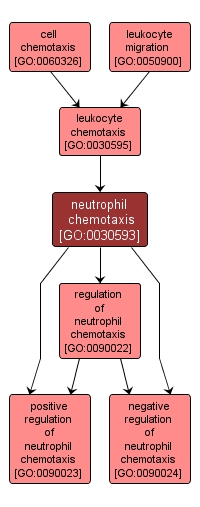GO TERM SUMMARY
|
| Name: |
neutrophil chemotaxis |
| Acc: |
GO:0030593 |
| Aspect: |
Biological Process |
| Desc: |
The directed movement of a neutrophil cell, the most numerous polymorphonuclear leukocyte found in the blood, in response to an external stimulus, usually an infection or wounding. |
|

|
INTERACTIVE GO GRAPH
|














